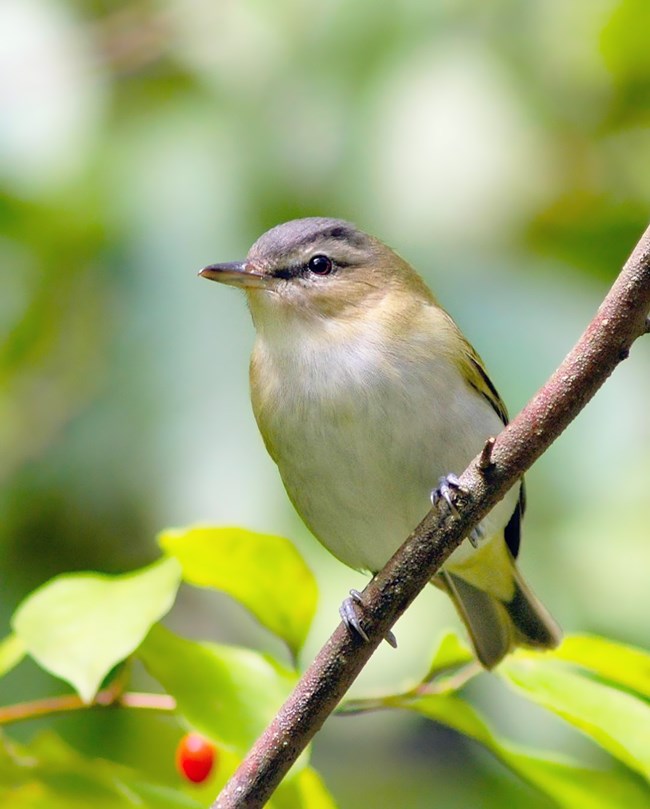
Overview
Landbirds (tree-dwelling birds, perching birds or songbirds, raptors, and ground-feeding birds) spend the majority of their lives in terrestrial environments. They comprise about 75% of the approximately 1,200 species of birds that inhabit North America (Rich et al. 2004). Birds play an important role in the ecosystems they inhabit. They occupy various levels in the food web, thereby playing a role in the flow of energy through ecosystems. Because they can be sensitive to habitat change, they are good indicators of ecosystem health. Grassland birds, in particular, respond to management practices such as grazing and fire, as well as landscape-level changes. Landbirds also have strong public appeal, with bird-watching being a popular, long-standing recreational pastime in the U.S. In the Southern Plains Network (SOPN) parks, there are more species of birds than any other group of vertebrates.
Landbirds are also relatively easy to detect, and they can be surveyed using standardized methods. Knowing about landbird populations can help park managers to judge the potential consequences of stressors and current and proposed management actions. Knowing which birds are present in a park also helps managers to better serve park visitors. Bird monitoring data also helps the NPS in evaluating the overall natural condition of network parks.
Measurements and Objectives of Monitoring
The SOPN has partnered with other networks, the Tucson Audubon Society, and, formerly, the Bird Conservancy of the Rockies, to assess breeding landbirds in two habitat types within network parks. We have conducted point count surveys along transects within grassland and riparian habitats at each park (depending on the availability of each habitat at a given park).
Measurements of occupancy, species richness, and density are used to:
- Estimate the proportion of points occupied for most species in most parks,
- Estimate parameters related to community dynamics, and
- Estimate the density of the most-common species.
From 2009-2013 and 2015-2016, the SOPN conducted landbird monitoring at the following parks:
Bent’s Old Fort National Historic Site
Capulin Volcano National Monument
Chicasaw National Recreation Area
Fort Larned National Historic Site
Fort Union National Monument
Lake Meredith National Recreation Area (including adjacent Alibates Flint Quarries National Monument)
Lyndon B. Johnson National Historical Park
Pecos National Historical Park
Sand Creek Massacre National Historic Site
Washita Battlefield National Historic Site
Current Status:
In 2017, monitoring was suspended. This decision was made because the data gained through monitoring were not sufficient to determine trends with acceptable reliability. This was due to the small size of the parks, and therefore sample sizes, within the network.
Source: NPS DataStore Saved Search 3794. To search for additional information, visit the NPS DataStore.
Quick Reads
Last updated: November 9, 2020
